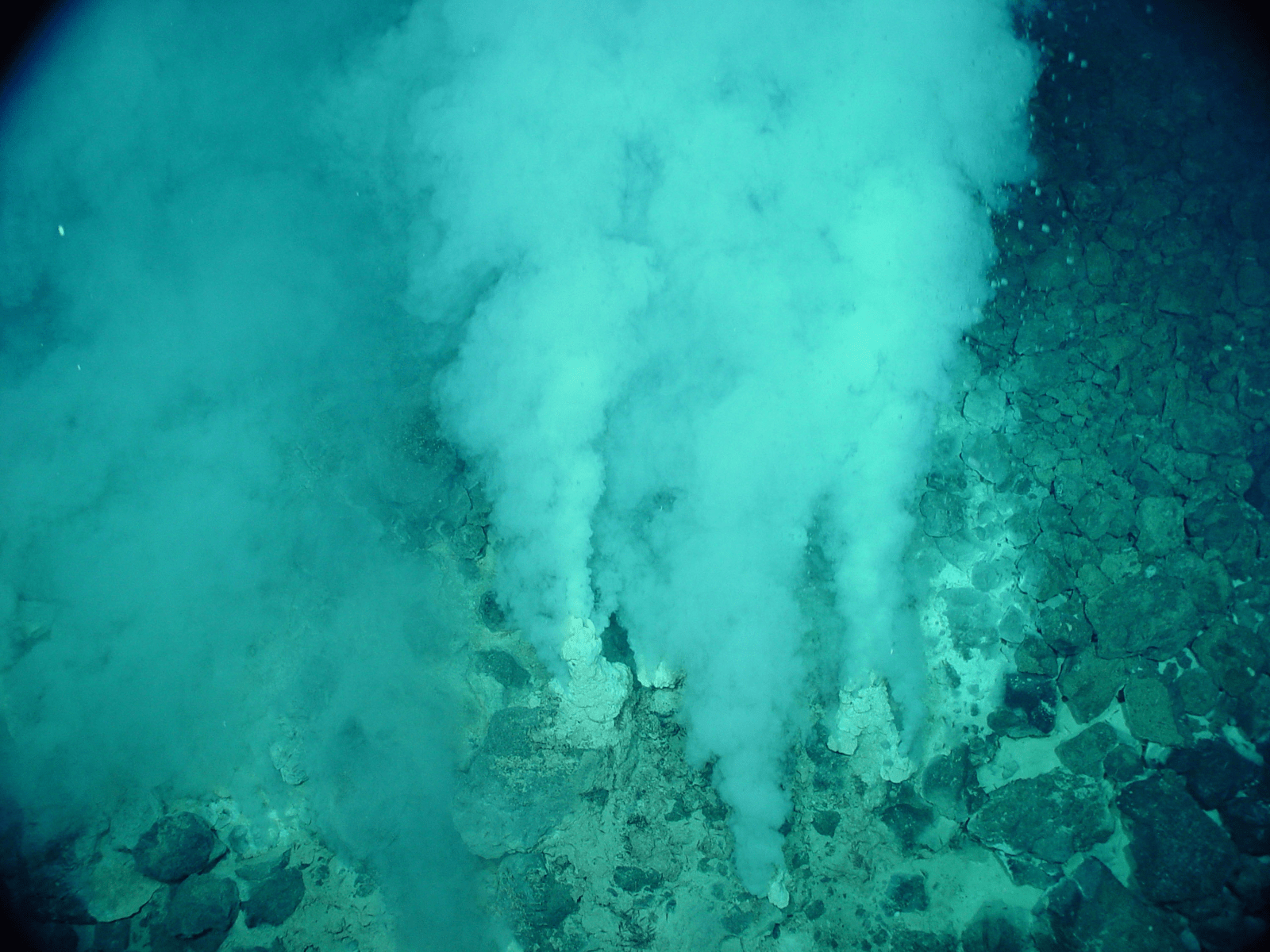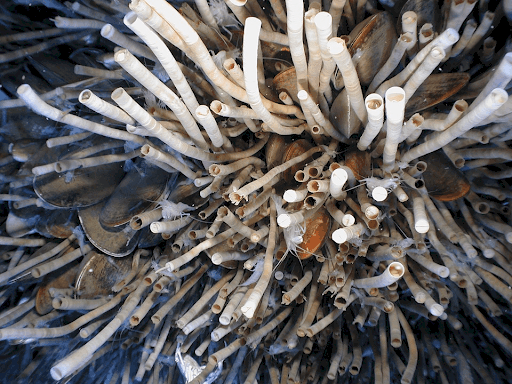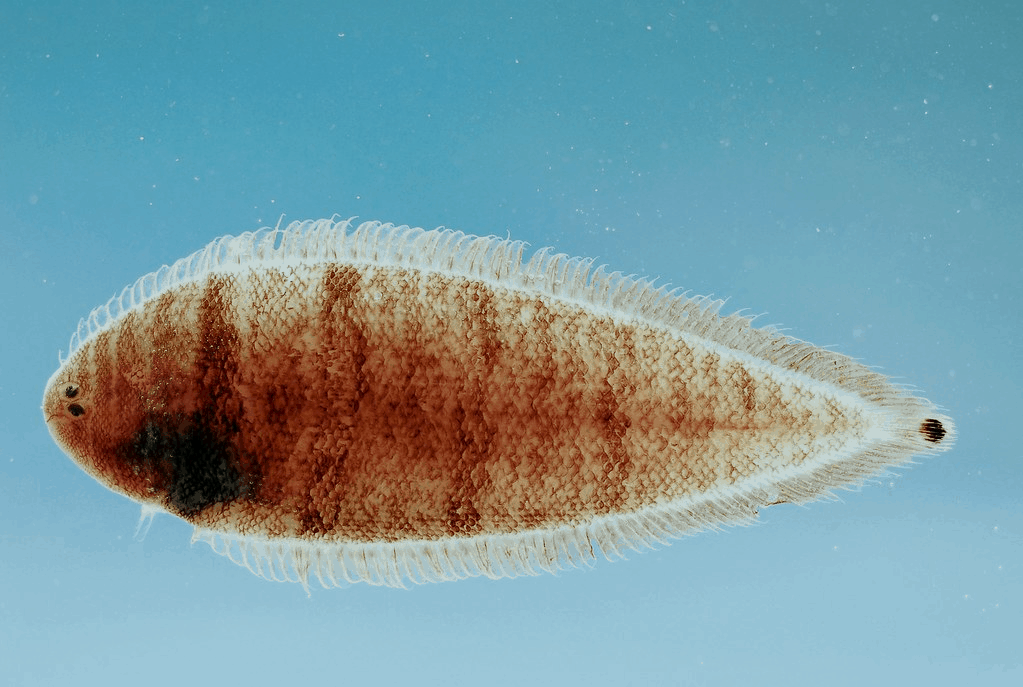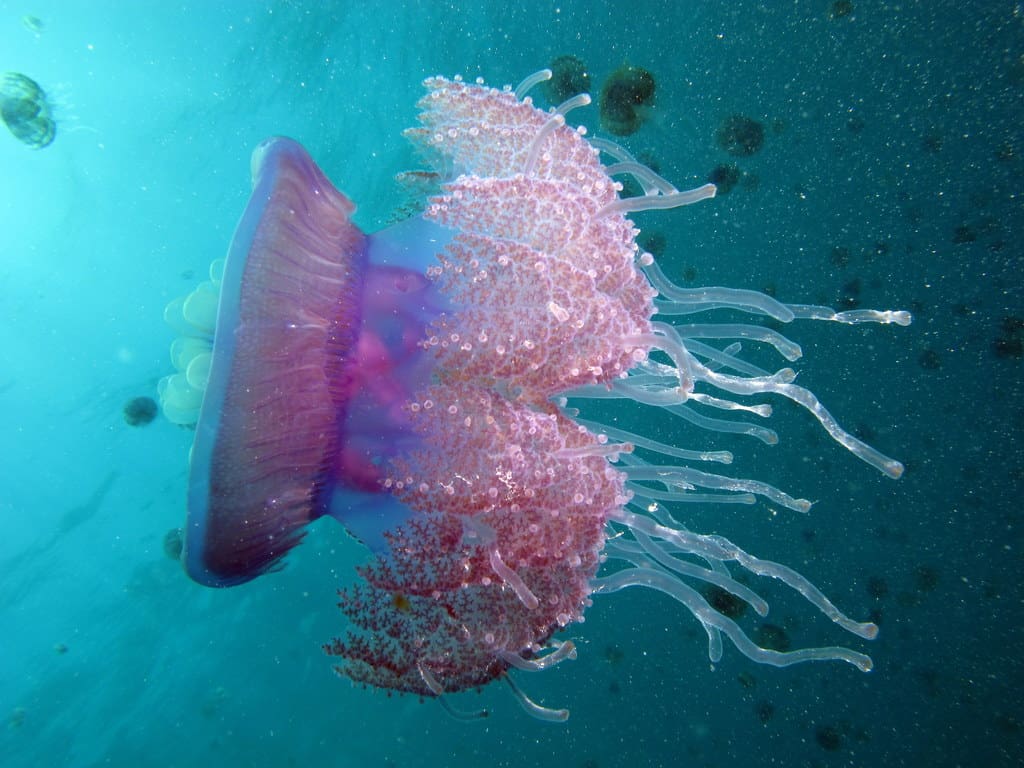Although we have discovered a plethora of plant and animal life thriving in the ocean, not that much is known about what dwells beyond the surface of the water. Why? Diving too deep means the pressure becomes so powerful that it’s almost impossible to venture safely. This concept leaves much to the imagination when it comes to strange sea creatures. Nevertheless, brave scuba divers, curious scientists, and other professionals continue working together to explore beneath the mysterious waves.
In February 2019, researchers dove into the Gulf of California to discover hydrothermal vents. The underwater area is rife with aquatic beings, some of which are quite psychedelic-looking and have been alive for millions of years.

1. What Are Hydrothermal Vents?
Hydrothermal vents, as the name suggests, are, essentially, underwater geysers formed near tectonic plates. Because the plates move freely around, they create cracks in the ocean floor that releases gases from beneath the Earth’s crust. These cracks also allow ocean water to seep into the cracks and become heated before being spewed back into the ocean again.
So how hot can it get down there? Roughly 750 degrees Fahrenheit, so don’t expect to get close to one anytime soon. However, even those temperatures haven’t stopped life from forming around them and have been there for millions of years. In fact, many scientists believe that real life on Earth began around these vents.

2. Black Smokers
It looks like scuba divers released two smoke bombs underwater. However, everything you see under the Gulf of California is quite natural. These hydrothermal vents come in two kinds. The first kind is a black smoker. It’s called this because of the literal black smoke that comes out of them.
Why is it black? Well, the surface contains deposits of iron sulfide, which is black by nature. The substance that erupts from the vents is the same element that’s found inside the skeletons of the gastropods mentioned earlier.

3. White Smokers
The other kind of vents that exist is called white smokers. Similar to the black smokers (but exactly opposite), the name comes from the fact that primarily white smoke emerges from these vents. The color has nothing to do with the structure of the chimneys the smoke comes out of, but rather the minerals that are being vented into the ocean.
The majority of the minerals that come out of white smokes are calcium, barium, and silicon, which are all white. Likely the differences between white and black smokers are location, as vents could be nearer to one mineral deposit more than the other.

4. Underwater Volcanoes
You should think of underwater volcanoes as larger versions of vents, except they’re spewing more than just gas and minerals into the water. These volcanoes are tall ridges that account for at least 75 percent of the output of magma on the planet.
The majority of them are located within deep waters, but there are some in shallow water that blows material into the atmosphere. A few volcanoes do have hydrothermal vents forming around them since they’re both related to tectonic plate activity.

5. Tube Worms
This strange sea creature is one of the oldest beings living within the ocean. Known as siboglinid tube worms, they root themselves on the ocean floor and can grow to a little more than 6 feet in length. They have no digestive system to speak of, so you may be wondering how they manage to stay alive in such a harsh environment.
The answer is that they absorb nutrients from the bacteria living inside them. These bacteria digest and convert hydrogen sulfide exhaled from the vents into minerals that the tube worms can use. In fact, these bacteria are pretty much found in all the organisms that live around these vents.

6. Scaly-Foot Gastropod
A gastropod is just the technical term for snails and slugs. Scientists have identified over 300 species of gastropods that live around the vents, all of varying sizes. The most common one is the scaly-foot gastropod, which gets its name from the weird shape of its foot.
The hydrothermal vent creature looks like this because it’s actually armored with iron mineral, which protects it from the heat of the vents so that it can move around easily. Iron sulfide has also been incorporated into its skeleton, which is the only creature in the animal kingdom to do so.

7. Pink Vent Fish
Also known as zoarcid fish, these fish are not pink. In fact, they might give you the shivers, especially if you were envisioning something sparkly based on the name and location. These ray-finned marine creatures are the top of the food chain. They eat anything and everything they can find living around the vents, from mussels to smaller tube worms.
They’re one of the three discovered species of fish that live around the vents. They’re mostly found near the Gulf of California. Not much else is known about these elusive fish, as scientists have been trying to find and study them for years.

8. Deep Sea Vent Octopus
You would be surprised to discover that octopuses live quite close to the sea vents. The deep sea vent octopus is one of them and feeds on mostly crabs or smaller crustaceans. It does not have an ink sac to save itself from predators and is really only 7.2 inches long. However, what it lacks in size, it makes up for with its high rate of survivability.
It’s exceptionally well-adapted for this kind of environment, using its arms to get around and to grab nearby food. This unusual underwater animal hasn’t demonstrated the ability to use jet propulsion, which the majority of other octopuses have.

9. Kiwa Crabs
Also known as yeti crabs, they live near the hydrothermal vents and are mostly known for their very hairy arms. They actually feed on the bacteria found near the vents, which it catches in the fine hairs on its arms. Scientists discovered that it waves its arms back and forth near the vents in order to get a good catch of bacteria to eat.
A kiwa crab is only about 5 to 6 inches long, so these animals are pretty tiny. It is a common belief that they’re blind. This sea creature is part of a family called “squat lobster,” which is a type of crustacean with a flattened body and long tails that are held underneath the thorax.

10. Strange Seascape
The area surrounding the hydrothermal vents is quite exotic to look at, wouldn’t you agree? Everything is covered in a silvery film and has a purple glow. These mystifying colors are mostly composed of the many minerals surrounding the vents. These minerals also create columns that continue to grow taller and taller, which some of them being as tall as 74 feet.
The violently-hot nature of the area around the vents has shaped the ocean floor into something that looks to be out of this world. You definitely won’t find structures like this anywhere else on land.

11. Methane Bubbles
Officially known as methane hydrates, these bubbles of natural gas are trapped as they hang onto a mineral ledge. The mineral is actually a crystalline lattice of ice. The lead researcher on the Schmidt Ocean Institute vessel, Falkor, was Mandy Joye. She works for the University of Georiga as a Marine Biologist.
Joye thinks the unusual, imperfect shapes might be from extreme temps, high pressure, and natural gas impurities. These methane hydrates were discovered at the Guaymas Basin site within the vent location.

12. Sheets of Microbes
If you didn’t know this was underwater, you might be quite confused about this picture. There are green and yellow sheets of microbes that are the primary food source for many of the other sea life that live around the vents. Microbes aren’t limited in color and can be any shade of the rainbow. These sheets even have orange, grey, and white hues.
The combination of the high heat and the salty seawater makes it a perfect environment for these microbes to grow. One wouldn’t think that possible with how deep these vents really go under the surface.

13. Construction of Minerals
As minerals are spewed into the cooler sea water, they start to precipitate and solidify. Over time, they come together to form solid structures underneath the ocean that many have never seen before. The same process creates chimneys that are discovered near the vents, but these minerals can also form huge solid pagodas that can be quite large.
Similar to the Great Barrier Reef in Australia, it is amazing to think that nature could build these structures all on its own is awe-inspiring. Sadly, the largest coral reef on the planet, which is located off the coast of Queensland, is dying.

14. Mussels
Mussels clump together around the entry points of the vents, gobbling up the bacteria swirling around in the water. They can also be found in the cracks along the sea floor doing the same thing, as the cracks also let gases seep out when the vents aren’t spewing out material.
They have a symbiotic relationship with the bacteria that live in their gills, which absorb the chemicals from the water and turn them into nutrients. When this isn’t going on, mussels can also filter out food from the water itself to survive.

15. Clams
No one thinks that clams would be so far down in the ocean, but it’s because of their hard shells that they’re able to survive such temperatures. Like mussels, they also cling to the vents, eating the bacteria that swarm around the hot waters.
How it works is that the bacteria cling to the clam’s gills and then use the chemical in the surrounding water to produce sugars. These sugars are what the clam uses for energy to move around with its single foot.

16. Dandelions
These aren’t the same as those pesky weeds you find growing in your yard. They’re actually a colony of numerous animals that hold onto each other. These animals are closely related to jellyfish, and they use their long tentacles to anchor themselves to rocks and to move around.
You won’t see dandelions very often around active vents. In fact, they are the last creatures to colonize the vents because they show up when the vents are no longer active, and the surrounding organisms are dying. They’re scavengers, cleaning up the remains of the deceased.

17. Shrimp
You’re not going to get your hands on these shrimp on your dinner plate any time soon. They’re so far down that it would be too expensive to trawl them back up to the surface. But there are a plethora of them around vents: at least 15 different species, with half of them living in the Atlantic and the other half in the Pacific.
You’ll find shrimp clustered around the black smokers that you find more often in the Atlantic Ocean. They’re also plagued with bacteria that they share a symbiotic relationship with to extract nutrients from the chemicals in the water.

18. Polychaete Worms
Instead of hydrothermal vents, you’ll find these little guys hanging around underwater volcanoes. Although they look kind of pretty with their pink skin, they’re actually ferocious predators that have jaws similar to the xenomorph in the “Aliens” movie.
There isn’t just one set of polychaete worms. They actually appear in different forms and have variable lifestyles, living in vastly different areas around the planet’s oceans. Some can be parasitic in nature, some can move around and have organs and jaws to catch food, while others are immobile.

19. Snake Stars
These tiny yellowish snake stars are similar to “elephant” and are usually found wrapped around coral branches. They wave their arms to catch food particulates in the water that they draw towards their mouths.
Snake stars may look very similar to starfish, but they have distinctly different shapes. Their central body disk looks sharply marked off from the rest of the arms. It’s this disk that has all of their internal organs. And instead of the mouth being on top like in starfish, it’s located on the bottom, within one of the many jaw plates.

20. Cup Corals
These are not the same as the reef-building corals that form huge colonies filling the oceans. Cup corals live very solitary lives. They don’t seem to have a problem with it, protected by their limestone external skeletons that keep them safe from the harsh chemicals of the sea water. They only grow up to about 3.5 inches across, so it would be easy for anyone to miss them.
At night time, it extends bioluminescent tentacles into the water to trap even more food more efficiently. They come in many different varieties, and not all of them live near vents or underwater volcanoes. They mostly stick to frigid waters and can also be found around shipwrecks and chunks of discarded metal.

21. Crown Jellyfish
This unusual jellyfish is likely part of a genus of jellyfish called Atolla, which can only survive at high depths in the ocean. It has long tentacles that it drags behind itself in order to catch small prey swimming around in the waters. They mostly feed on zooplankton, which are microscopic animals.
Crown jellyfish are capable of bioluminescence and are lit up when they’re touched. Left undisturbed, they’re quite transparent. If they’re attacked, they can use their light to startle and mislead predators as to what’s going on, causing confusion. Otherwise, the light is used to attract prey.

22. Black Dragonfish
These small fishes look terrifying, but they’re actually pretty little. There are fierce predators when it comes to hunting small fish, but only the females are capable of it. The males actually have no teeth or even functional stomachs, so many scientists believe that their only purpose is for breeding.
Black dragonfish are very sexually dimorphic, with the females being black with stripes and the males being dull brown. The males are also lacking in sharp teeth and pelvic fins, so they don’t swim around a lot. The females are known to migrate to find a mate and to lay their eggs.

23. Tonguefish
The tonguefish is pretty strange to look at, with its eyes on one side of its head. That’s so that they can move near the seafloor while still keeping an eye on predators. While swimming, they graze on the bacterial mats that are near nutrient flows, absorbing and converting it all into useful nutrients.
Tonguefish are absolutely in love with sulfur and congregate around hydrothermal vents on the seafloor. It’s the only flatfish to actually be found in these areas, so it’s quite a unique species.

24. Human Waste
Even this far down, scientists are still finding pieces of human garbage on the ocean floor. It’s a demonstration that our influence has been nothing but negative for the planet. There should be no reason we can’t use biodegradable products, recycle more, and simply not throw trash in the ocean.
Who knows what our presence on this planet could do to these creatures that have been alive for millions of years? Sure, they can live in scorching underwater temperatures filled with unique minerals. That doesn’t mean these adaptable creatures can live eating plastic. Hopefully, being aware of our actions as human beings and taking the initiative to be more careful with our disposal of materials can help these aquatic animals to thrive. After all, they are quite majestic!

